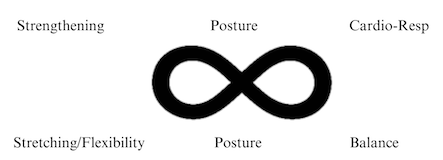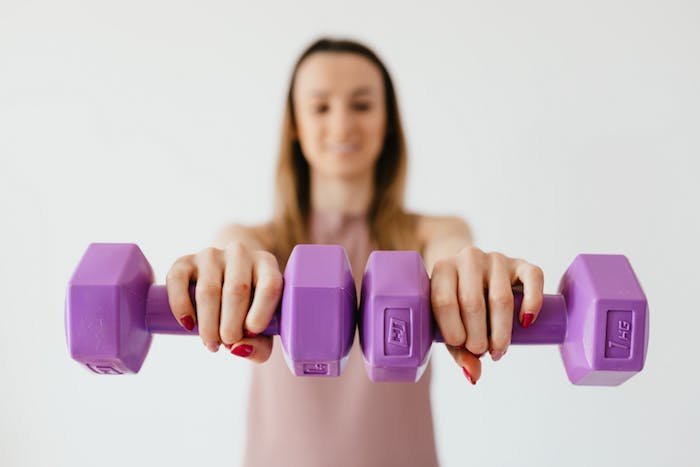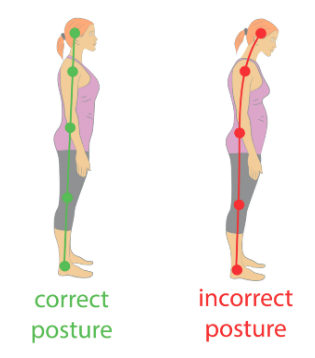Developing some key points on exercise you can find in my older blogs.
The most effective exercise programs will result in improved muscle and bone strength, cardiorespiratory fitness, flexibility and balance. Correct posture while exercising is important in the prevention of injury. I think of it as an eternity symbol, each exercise type contributing to the next and to overall wellbeing.
Developing a multi-faceted program takes time, effort and commitment, but it’s so worth it! Exercise becomes part of your life because it makes you feel good and live more fully. Exercise is for everybody; whatever level of fitness and ability you have, there’s an exercise program waiting for you.
Here’s what has worked for me:
Before you start, listen to your body. If an exercise causes you a new or worse pain, stop it immediately. If you’re feeling unwell, give yourself a rest, or modify your program accordingly. Exercise is a life-long engagement, so missing a day or two is ok. (Chronic pain and fatigue bring special challenges here, and medical/professional advice on the correct program for you is well worth exploring.)
Another essential pre-workout check: posture. Correct posture means head is aligned, chin and bottom tucked in. Use a mirror or work with a knowledgeable friend/professional to get it right. It will help you avoid injury.
Stretch muscles after your workout. This prevents tightness and ultimately enables you to carry on exercising another day.
If you can, get a second pair of eyes, preferably an experienced professional. They can help you develop your program, including correct stretches, give you feedback on your posture, and on how you’re performing the exercise.
If you’re living with a new injury or illness, ask your doctor’s advice before you start. A Physiotherapist will also be able to guide you.
Build up gradually and vary your program.
Wear the correct clothing and footwear. Clothing should allow you to move freely and shoes should be supportive and fit well. No high heels!
Balance is a big one, because many factors are at play. See my next blog for more on this. But here are some ways to start working on balance, always within the limits of your safety, and with hand support as needed:
I’ve written in more detail about some of the components of exercise in these blogs.
Strength Training – Blog Feb 15 2021 7 Benefits of Resistance Training.
Cardiorespiratory exercise - Blog March 15 2021 Cardiorespiratory Fitness.
Stretching - Blog Nov 15, 2021 Stretching -why do it and how to be safe.
Happy exercising!
R. Sian Owen
Registered Physiotherapist











